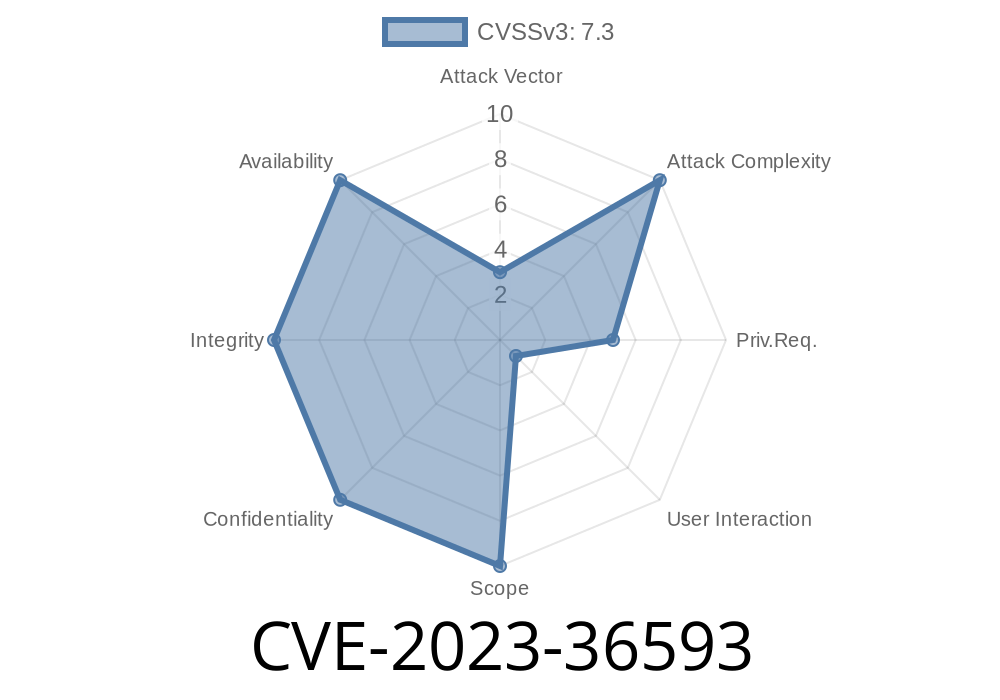The digital world is fraught with hidden dangers, and vulnerabilities like CVE-2023-36593 remind us why regular patching and awareness are essential. In this long-read, you'll find everything you need to understand, recognize, and mitigate the Microsoft Message Queuing (MSMQ) Remote Code Execution (RCE) vulnerability. Whether you're a system admin or a curious coder, this guide brings you simple, clear info, code snippets, links to original advisories, and real exploit examples.
What is MSMQ? Why Does It Matter?
Microsoft Message Queuing (MSMQ) is a message-based communication protocol built into Windows, used by enterprise applications and services to send messages between systems, even across networks. Many modern and legacy applications depend on MSMQ for guaranteed message delivery.
While powerful, a flaw in MSMQ can allow attackers to send crafted network packets, running malicious code on the victim system—underlining the gravity of CVE-2023-36593.
What Makes It Dangerous?
A threat actor can send a crafted MSMQ packet to the vulnerable service running on port 1801/tcp. No authentication is required. Successful exploitation lets the attacker execute code with the permissions of the MSMQ service, often SYSTEM, granting full control.
How Does the Exploit Work? (With Code!)
MSMQ fails to properly validate certain message data, leading to a buffer overflow that allows remote code execution.
Here's a basic, educational PoC showing how a Python script can talk to the MSMQ port and simulate sending a malformed message (do not use for malicious purposes):
import socket
target_ip = "VICTIM_IP"
target_port = 1801 # MSMQ's TCP port
# This is a simplified/fake buffer; to actually trigger the bug requires deep packet knowledge!
# For educational use only.
malicious_buffer = b"A" * 2048 # Oversized payload to cause potential overflow
try:
print("[*] Connecting to MSMQ...")
s = socket.socket(socket.AF_INET, socket.SOCK_STREAM)
s.connect((target_ip, target_port))
print("[*] Sending evil buffer...")
s.sendall(malicious_buffer)
print("[*] Payload sent!")
s.close()
except Exception as e:
print(f"[!] Error: {e}")
Real-World Exploits
A working exploit would craft a specifically structured message, with headers and payloads exploiting the buffer overflow inside MSMQ's queue management. Public PoCs can be found by advanced security researchers, such as:
- Horizon3.ai’s public exploit and technical breakdown
- Zero Day Initiative advisory and analysis
Microsoft Security Bulletin:
CVE-2023-36593 | Microsoft Message Queuing Remote Code Execution Vulnerability
NVD Entry:
NVD - CVE-2023-36593
- Detailed Analysis / Exploitation:
- Horizon3.ai Analysis
- Zero Day Initiative
How to Protect Yourself
1. Patch Immediately
Microsoft released patches as part of October 2023 Patch Tuesday. Download and apply the fix via Windows Update or from the official MSRC advisory.
2. Disable MSMQ If Not Needed
Most environments do not need MSMQ.
Go to “Windows Features” → Uncheck “Message Queuing”.
3. Block Port 1801
Use your firewall to restrict inbound (and unnecessary outbound) connections to port 1801/tcp.
4. Monitor for Scans and Abuse
Watch your logs for unexpected connections or traffic to port 1801.
Conclusion
CVE-2023-36593 is a critical wake-up call for anyone managing Windows servers or applications using MSMQ. Because the flaw is easy to exploit and (if successful) grants full takeover, rapid patching and network hygiene are essential.
Stay informed, patch often, and remember: even legacy features like MSMQ can become tomorrow’s cyber battlefield.
*For more technical details and the latest updates, check out the official advisories linked above and always follow Microsoft’s security best practices.*
Timeline
Published on: 10/10/2023 18:15:14 UTC
Last modified on: 10/13/2023 19:58:44 UTC
